- Medieval Armoury
- Bronze Statue
- Accessories
- Accessories
- Musical Instrument
- Stallone Pig Bristle
- Rugs & Carpet
- Zinc Oxide
- GUAR GUM
- Brass Nautical & Marine Re-Production Instrument
- Brass Globe
- Brass Porthol Mirror
- Brass Binoculers
- Brass Search Light
- Brass Flag Hook
- Brass Measurement Tape
- Brass Telescope
- Brass Gong
- Brass Clinometer
- Brass Abney Level
- Brass Ship Clock
- Sailers Wheel
- Brass Microscope
- Brass Ship Telegraph
- Brass Ship Anchor
- Brass Porthol Window
- Brass Sextant
- Brass Mix Nautical Gift
- Brass Weather Instrument
- Brass Sand Timer
- Brass Boat Horn
- Brass Ship Bell
- Brass Theodolite
- Brass Divider
- Brass Vernier Caliper
- Brass Surveying Level
- Brass Nautical Key Chain
- Brass Pully [Reel]
- Brass Diving Helmet
- Brass Magnifier
- Brass Rain Guage
- Brass Ship Lamp
- Brass Compass
- Brass Lamp
- Home
- About us
- ShopNew

50% OFF FOR
New collection
Free shipping & free returns on dresses

Hot week
Discover the selection
Shipping worldwide only 5 days - Executive Member
- Contact us
- Medieval Armoury
- Bronze Statue
- Accessories
- Accessories
- Musical Instrument
- Stallone Pig Bristle
- Rugs & Carpet
- Zinc Oxide
- GUAR GUM
- Brass Nautical & Marine Re-Production Instrument
- Brass Globe
- Brass Porthol Mirror
- Brass Binoculers
- Brass Search Light
- Brass Flag Hook
- Brass Measurement Tape
- Brass Telescope
- Brass Gong
- Brass Clinometer
- Brass Abney Level
- Brass Ship Clock
- Sailers Wheel
- Brass Microscope
- Brass Ship Telegraph
- Brass Ship Anchor
- Brass Porthol Window
- Brass Sextant
- Brass Mix Nautical Gift
- Brass Weather Instrument
- Brass Sand Timer
- Brass Boat Horn
- Brass Ship Bell
- Brass Theodolite
- Brass Divider
- Brass Vernier Caliper
- Brass Surveying Level
- Brass Nautical Key Chain
- Brass Pully [Reel]
- Brass Diving Helmet
- Brass Magnifier
- Brass Rain Guage
- Brass Ship Lamp
- Brass Compass
- Brass Lamp
SA0268 Norman Helmet – Early Medieval
Norman Helmet – Early Medieval
Norman Helmet – Early Medieval
From being uniformly conical in shape, the skull of the nasal helmet became more
varied during the 12th century. For most of the century nasal helmets with a
forward deflected apex, often called the ‘Phrygian cap’ shape, were in widespread
use. It is possible that the deflection of the apex of the skull was the natural result
of making the front of the helmet thicker than the rest of the helmet during the
process of raising the skull from sheet iron.Though still used, the conical type of
helmet declined in popularity during the latter half of the 12th century and round topped nasal helmets came into fashion. King Richard I of England is depicted
wearing a round-skulled nasal helmet on his first Great Seal (1189).The knight at
the centre is wearing a flat-topped helmet. Murder of Thomas Becket, manuscript
c. 1200 A further type of nasal helmet developed in the late 12th century. This
helmet had a flat top and a square profile. This form of nasal helmet was the
forerunner of deeper, cylindrical helmets with greater facial protection, enclosed
helmets, and eventually the great helm. The existing nasal formed the basis for
increased facial protection, eventually, by 1200, producing a face covering plate
which was pierced for sight and ventilation.
Related products
Copyright © STALLONE OVERSEAS PVT. LTD. All rights reserved.
- Home
- About us
- ShopNew

50% OFF FOR
New collection
Free shipping & free returns on dresses

Hot week
Discover the selection
Shipping worldwide only 5 days - Executive Member
- Contact us

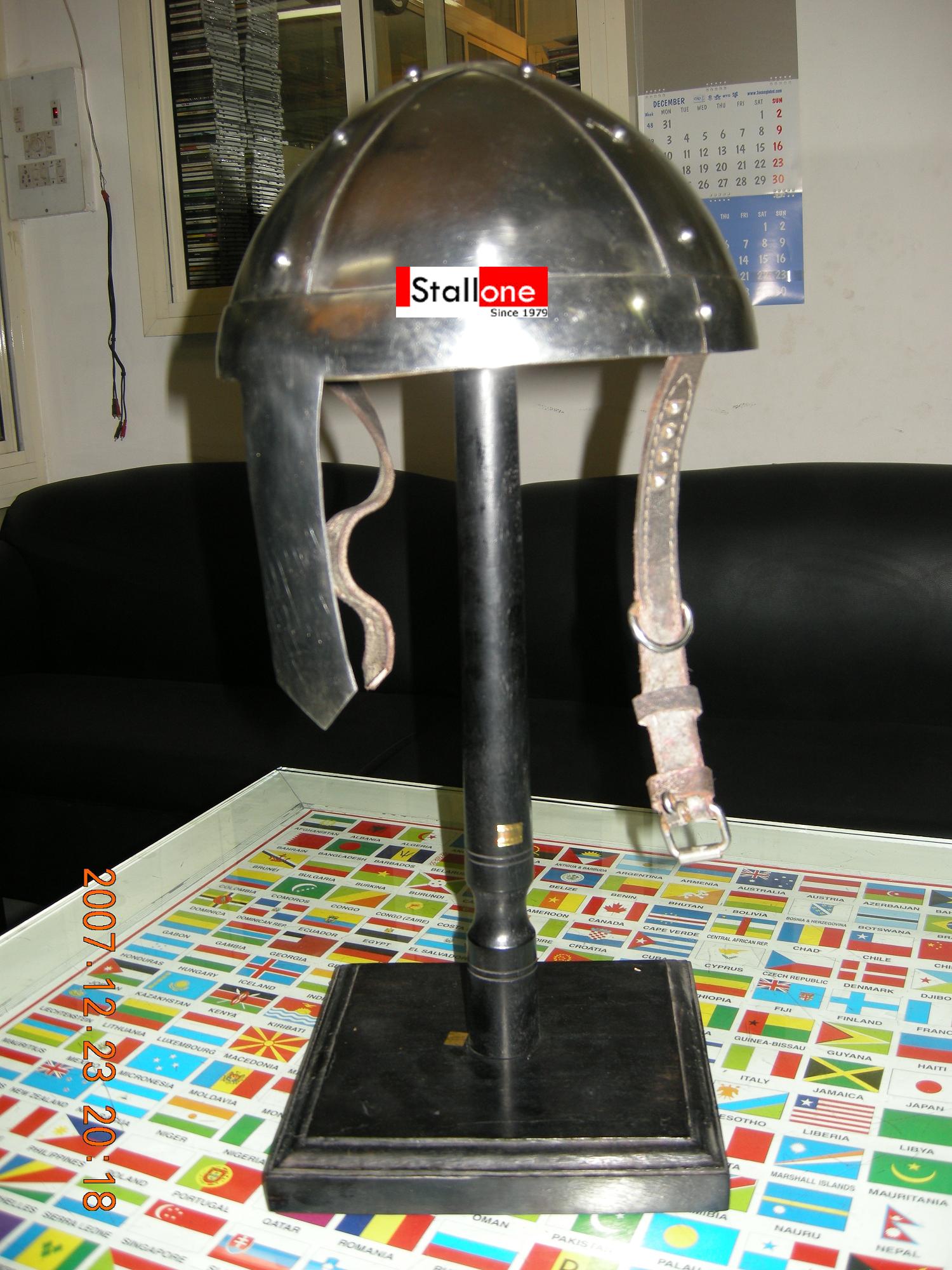


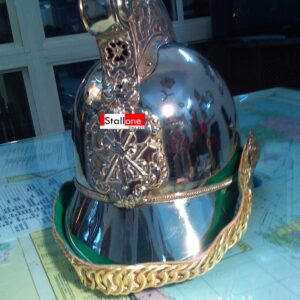
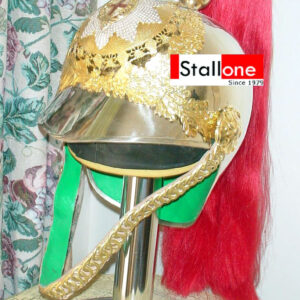
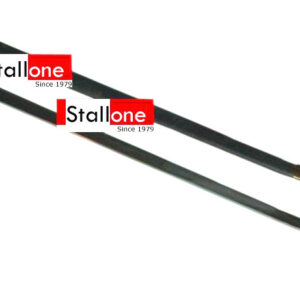
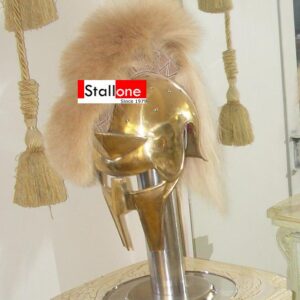
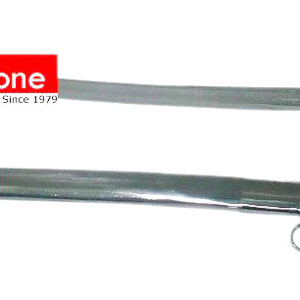
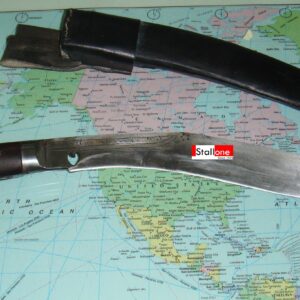
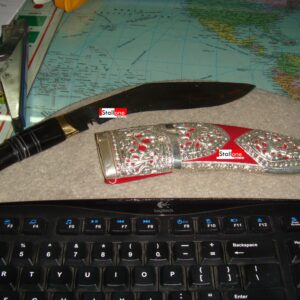
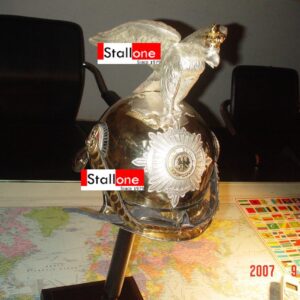
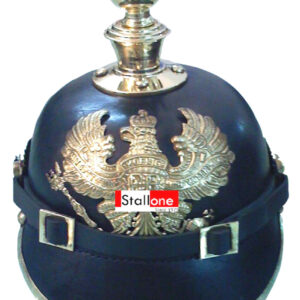
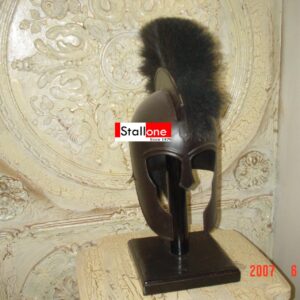
Reviews
There are no reviews yet.